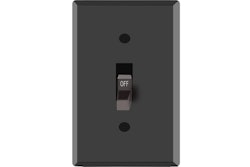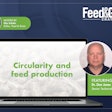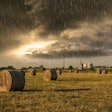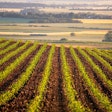Transcription of Feed & Grain Chat with Tom Ryan, president of Truterra.
Elise Schafer, editor of Feed & Grain:Hi everyone, welcome to Feed & Grain Chat. I'm your host Elise Schafer, editor of Feed & Grain. This edition of Feed & Grain Chat is brought to you by WATT Global Media and Feedandgrain.com. Feedandgrain.com is your source for the latest news, product and equipment information for the grain handling and feed manufacturing industries.
Today, I'm joined on zoom by Tom Ryan, president of Truterra, the sustainability business of Lant O’ Lakes. He's here today to talk about how ag retailers can enhance their customer offerings with sustainability programs. Hi, Tom. How are you?
Tom Ryan, president of Truterra:I'm doing great. Thanks for having me.
Schafer:Yes, absolutely. Thanks for coming on! Ag retailers and cooperatives today can play a critical role in sustainability by offering new programs to producers. Can you describe some of these emerging services and products?
Ryan:I think it's actually a combination of old and new. There's a lot of different opportunities for growers to engage with their trusted retail network and some are varying on different degrees of complexity.
So, for example, things that have existed that continue forward are like CSP and equip type programs that they can work with their trusted advisor, such as with our Truterra network where we have over 50 retailers and 1,000 locations nationwide, to build a plan around making implementations and changes on their operation that begin to reduce things like greenhouse gas emissions and the generation of carbon.
So, that could be something as simple as variable rate nitrogen applications or prescriptions. That's a new practice for some growers that haven't adopted that today. And then there's some more detailed, some newer type programs, which focus more into the carbon space. A lot of a lot of different opportunities there.
In addition to that it's working with that retailer to overall build a plan that starts with, hey, where is that grower at today on their journey and their level of comfort with making sustainable practice changes, and then where do they want to go? And then really bridging that with a plan that surrounds not only agronomic expertise in the in the way that they've always provided, but also takes kind of this conservation lens and opens up different funding sources, you know, both traditional and non-traditional. Could be local watershed districts, depending on where growers located could be partnering with some of our downstream CPG companies as they work to build a more positive greenhouse gas emission footprint in their supply shifts.
So, it's really starts with that plan enabled through your trusted retailer and advisor, and then building on that based on how far and how deep that grower wants to go and what their level of comfort is in enabling some of those practices.
Schafer:Well, you mentioned the carbon markets, which is new territory for some ag retailers. Can you explain how carbon trading works and how ag retailers can facilitate this?
Ryan:I think it all starts with a plan. And then building that plan around, you know, what are the practice changes that a grower can make on their operation that they're comfortable with, that they feel confident in and have some data or expertise in adopting those practices and having a positive outcome at the end of it?
And then beyond that, it's layering in, you know, the support of the industry around really building it out and broadening those practice changes into the opportunities that may exist, whether it's financially or whether it's, it's the environment. So, it really starts with the plan and then from there, building out that implementation of what is step one, step two, and then once we make those, how do we track and measure that. So, we have a great tool, the Trutera sustainability tool, that does that quantification or calculation of the impacts of those practice changes or interventions on that farm to where we can then quantify it.
And then ultimately, I think what really sets our program apart is that the grower has the flexibility and in retains ownership of those improvements — whether it's carbon or whether it's the opportunity to work with a CPG to position those together as insets — you know, in their supply shed, they retain that right. And, ultimately, we play the part in the middle of connecting the two parties together, supported by our ag retail network as the kind of the conservation Sherpa that helps them through the journey because it is difficult. There's a lot of uncertainty, a lot of unknowns and that's a role that we feel is very important and as one of the only farmer-owned retail enabled sustainability platforms, Tuterra sets ourselves apart by really providing that technical service and expertise that it takes to bring it all the way through not only the generation of the credits or the carbon, but also connecting that to the end markets. Whether that's through CPG, through food, through fiber, through fuel and our relationships that we have in the downstream CPG business.
Schafer:Now could you go into a little more detail about how sustainability programs and conservation practices enhance the entire food supply chain?
Ryan:When you think about regenerative ag in general, you know, I think the common definition is leaving the soil and the land in a better position than when we found it. When you look at it in general, I think that's what farmers have always done. They always aspire to leave the land in a better position, or else they cease to exist. And so when you go beyond the immediate impacts of the farm, or the soil, in summary, it all comes together in a connected ecosystem, where if you have healthy soils that leads to healthy farms, if you have healthy farms that leads to healthy food supplies, healthy food supplies lead to healthy communities, and that that leads to a strong nation. And so, it is all interconnected.
And much less the additional enhancements to not only the food chain, but also the climate and environment itself — but making positive impacts whether that's on that local soil, water conservation district or watershed, whether it's on this soil or land itself, whether it's on the broader climate, it's all interconnected and an all plays together in one solution that has the farmer at the center, surrounded by a network of retail that they trust.
And that I believe is the farmers ‘ role in the long term. Sustainability commitments of large companies and countries is so good because nobody is more connected to the land. Nobody is better positioned to be the steward of that land and to bring it all together into a solution that benefits all parties.
Schafer:Tom, I couldn't agree more. Thank you so much for coming on and sharing how ag retailers can play a role in the sustainability of the food and feed supply chain.
That's all for today's Feed & Grain Chat. I hope to see you next time.
Truterra, the sustainability business ofland O’Lakesoffers a range of conservation and stewardship solutions through its nationwide network of more than 50 ag retailers.
Ag retailerstoday can gain deep insights into their farmers’ operations that will help them participate in emerging markets like carbon, ecosystem services andsustainably produced commodities.
In thisFeed & Grain Chat, Truterra’s President Tom Ryan shares the vital role ag retailers can play in helping producers reduce greenhouse gas emissions and their overall carbon footprints.






















